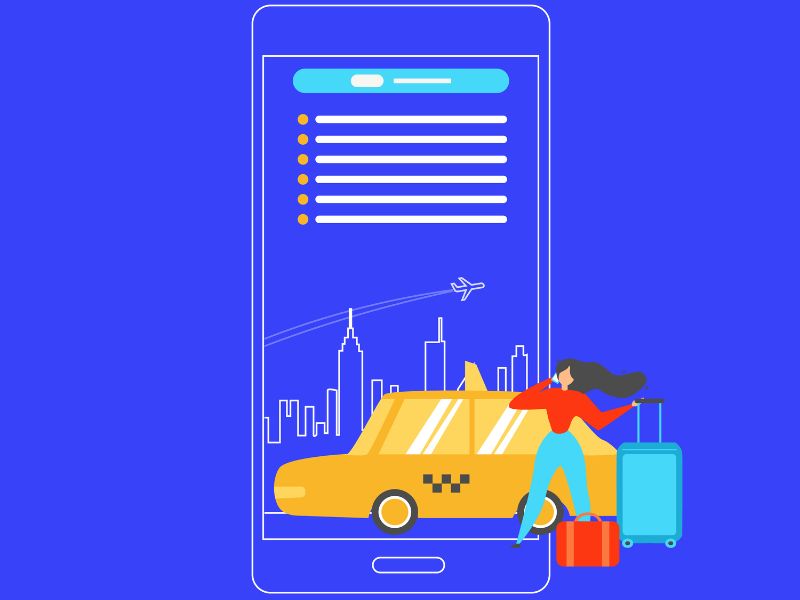


Explore key challenges in taxi app development and discover smart solutions for secure, scalable, and user-friendly ride-hailing apps.
Taxi apps are changing the way people move around cities. They bring speed, safety, and affordability to daily travel. But creating a reliable app is not as simple as it looks. A taxi app development company must tackle several hurdles, like GPS accuracy, payment security, and scalability, to deliver a smooth experience. Let’s dive into the biggest challenges and the smart solutions that make taxi apps successful.
At its core, a taxi app connects riders and drivers in real-time. Common features include:
Live GPS tracking
Quick and easy booking
Multiple payment methods
Driver and passenger profiles
Ratings and reviews
Sounds simple, right? Behind the scenes, it’s a complex system that needs careful planning and flawless execution.
As more users join, the app should be able to handle high traffic without crashing.
Solution: Using microservices and cloud platforms makes the app flexible, reliable, and ready to scale when demand spikes.
If GPS isn’t accurate, riders and drivers get frustrated. Wrong routes or delays can ruin the experience.
Solution: Advanced APIs like Google Maps or Mapbox, paired with AI-driven route optimization, ensure accurate and fast navigation.
Riders expect secure, fast, and diverse payment options. A single issue with transactions can break trust.
Solution: Add encrypted, PCI-DSS compliant gateways that support cards, wallets, and digital payments.
Too few drivers lead to long wait times. Too many drivers leave cars sitting idle.
Solution: AI-based demand forecasting and surge pricing help balance availability and ensure smooth operations.
Taxi apps collect sensitive data like locations, phone numbers, and payments. If leaked, it can harm both users and brand reputation.
Solution: Encrypt all data, follow GDPR rules, and enable two-factor authentication for extra safety.
Every city has its own transport rules. Missing compliance can lead to bans or heavy fines.
Solution: Build region-specific modules that adapt the app to local laws and keep operations safe.
If the app feels confusing, people won’t use it. A smooth design is essential.
Solution: Keep the design simple, add quick navigation, real-time alerts, and hassle-free booking flows.
Fake accounts or unverified drivers create safety risks. Trust is the foundation of a taxi app.
Solution: Run background checks, enable ID verification, and add safety features like SOS buttons.
On weekends or holidays, user traffic can skyrocket. Poor handling may crash servers.
Solution: Use load balancing, caching, and cloud scaling to keep performance steady even at peak hours.
When expanding globally, users expect apps in their language and suited to local culture.
Solution: Add localization tools and translation frameworks to personalize the experience.
With big names like Uber ruling the market, new apps need something unique to survive.
Solution: Offer niche features like eco-friendly rides, women-only services, or subscription-based models.
An app isn’t finished after launch. Without updates, it quickly becomes outdated.
Solution: Regular bug fixes, security patches, and new features keep the app relevant and competitive.
Taxi app development is a journey filled with challenges—from GPS issues to compliance concerns. But with the right approach, these problems can turn into opportunities. A solid strategy, strong technology, and a user-first mindset ensure success. If you want to build an app that stands out, working with an experienced Mobile App Development Company in USA is the best step forward.
Q1. What makes a taxi app successful?
Ans: A balance of smooth booking, reliable tracking, secure payments, and a friendly design.
Q2. How much does it cost to build a taxi app?
Ans: Depending on features, it can range anywhere from $20,000 to $100,000+.
Q3. How do taxi apps keep passengers safe?
Ans: By verifying drivers, tracking rides, and adding SOS and rating features.
Q4. Can small startups compete with Uber or Lyft?
Ans: Yes, by focusing on niche markets, unique services, or local expertise.
Q5. How long does it take to launch a taxi app?
Ans: On average, 4–8 months depending on complexity and custom features.
